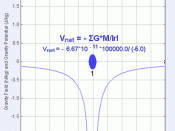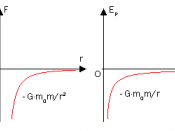Upon what does the final speed of a trolley depend?
Aim- The Aim of this investigation is to discover how certain variables affect the final speed of a trolley. I will investigate this using an elevated ramp and a trolley to down it. I will investigate the relationship between the height of a ramp (which a trolley is rolled down) and the trolley's final speed as it comes off the ramp.
Hypothesis- I predict that as the height of the ramp is increased the final speed of the trolley will also be increased: this can be both measured and easily seen. A trolley accelerates down a ramp due to the force of gravity pulling it towards Earth. If the ramp is heightened, the trolley is therefore higher.
Gravitational potential energy = Weight x Height
Via this equation we see that gravitational potential energy is higher: the trolley's weight does not change but its height is more so it has more gravitational potential energy.
It is gravitational potential energy that accelerates the trolley down the slope because over the course of the slope gravitational potential energy is converted into kinetic energy. Therefore if there is more gravitational potential energy available to be converted into kinetic energy the trolley will have more kinetic energy and thus its final speed will be faster.
I further predict that the Height of the ramp will be directly proportional to the final speed of the trolley squared.
Kinetic energy = ý mass x speed"
From this we see that the kinetic energy of the trolley is dependent upon its speed. The trolley obtains its kinetic energy as it goes down the slope solely due to gravitational potential energy; as explained above. So, in this case:
Kinetic energy = Gravitational potential energy
Therefore:
Gravitational potential energy =...


